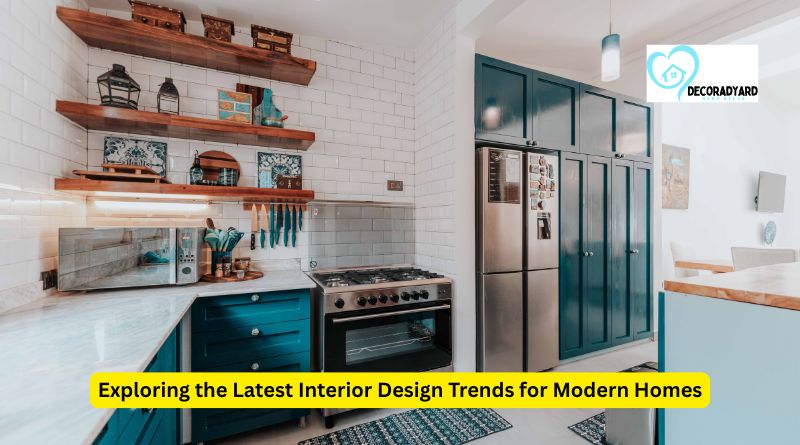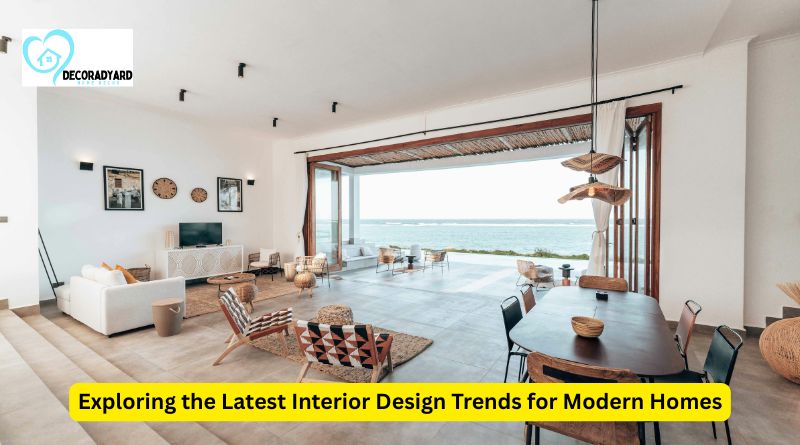Understanding the Evolution of Interior Design Trends
Interior design has evolved beyond just decorating a space—it’s now a reflection of lifestyle, technology, and sustainability. Over the years, interior design trends have shifted to embrace comfort, functionality, and personalization. In 2025, these trends are about creating environments that are not only visually appealing but also emotionally uplifting. Whether you live in a small apartment or a spacious villa, the latest design concepts focus on transforming every corner into a meaningful space that resonates with your personality.
The Rise of Sustainable and Eco-Friendly Designs
One of the most dominant interior design trends today is sustainability. Homeowners are increasingly conscious of how their design choices affect the environment. This has led to the use of natural, renewable materials such as bamboo, reclaimed wood, jute, and cork. Eco-friendly paints and low-VOC finishes are also gaining popularity. Indoor plants are not only being used for decoration but also to improve air quality and promote a sense of well-being. Sustainable design is no longer a niche concept—it’s a mainstream movement reshaping how we view modern living.
Minimalism with a Touch of Personality
Minimalism continues to reign, but it’s no longer about empty white spaces and rigid simplicity. The new minimalism trend blends functionality with warmth and personal expression. Designers are encouraging the use of statement pieces—like a bold rug, textured wall art, or a unique light fixture—to add character without overwhelming the space. This shift reflects how interior design trends are adapting to people’s desire for balance: a clutter-free environment that still feels cozy and inviting.

Smart Homes and Technological Integration
Technology has become an integral part of modern interior design. The latest interior design trends incorporate smart home technology seamlessly into decor. From voice-controlled lighting and automated blinds to energy-efficient appliances, homes are becoming smarter and more intuitive. Designers are finding innovative ways to hide wires and blend gadgets into furniture and wall designs. The result is a futuristic yet harmonious living space that combines style with convenience.
The Return of Natural Colors and Textures
Color palettes are shifting toward earthy and organic tones. Shades like terracotta, sage green, sand beige, and warm brown dominate the 2025 color trends. These hues evoke calmness and connection to nature, perfectly aligning with the broader movement toward sustainability. Textures also play a vital role—woven fabrics, linen curtains, and handcrafted pottery are making a comeback. These elements add depth and tactile richness, creating spaces that feel grounded and authentic.
Multifunctional Spaces for Modern Living
As remote work and hybrid lifestyles continue, homes are being designed to serve multiple purposes. Living rooms double as home offices, dining areas transform into study corners, and even small balconies are converted into relaxation zones. This multifunctional approach is one of the most practical interior design trends of the decade. Designers emphasize modular furniture, foldable desks, and storage solutions that make the most of limited space while maintaining aesthetic appeal.
Vintage Revival and Timeless Elegance
Another emerging trend is the revival of vintage styles. From mid-century modern furniture to antique accessories, homeowners are rediscovering the charm of timeless design. Mixing old and new pieces creates a unique and layered look that tells a story. This approach not only adds depth to interiors but also promotes sustainability by repurposing older items instead of discarding them.
Conclusion: Shaping the Future of Living Spaces
In summary, interior design trends in 2025 highlight a harmonious blend of sustainability, technology, functionality, and personality. Today’s homeowners are more focused on creating spaces that support their mental well-being, align with their values, and adapt to their evolving lifestyles. The future of interior design lies in innovation guided by authenticity—where beauty, comfort, and purpose coexist. Whether you’re renovating a room or designing an entire home, staying attuned to these evolving trends can help you craft a space that feels truly yours.



